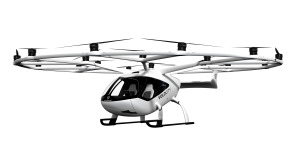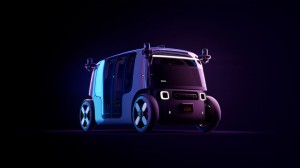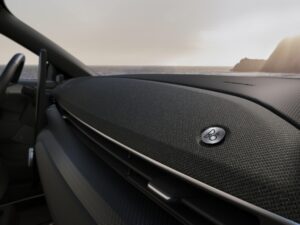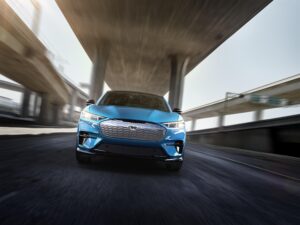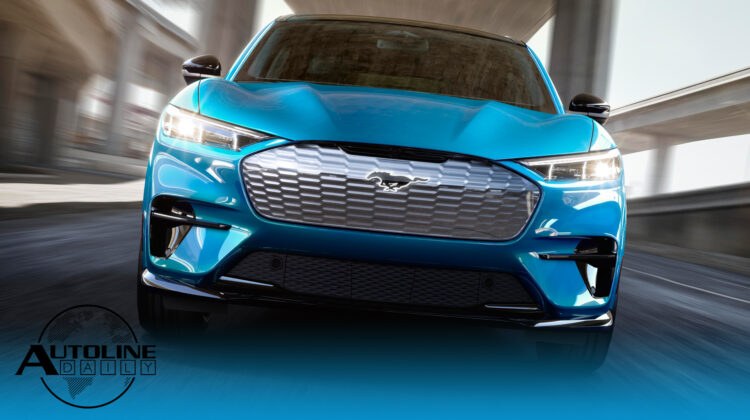
Listen to “AD #2979 – UAW Agrees to Independent Oversight; VTOLs Tested for Emergency Use; Ford Mustang Mach-E Impressions” on Spreaker.
Follow us on social media:
Runtime: 10:48
0:38 UAW Agrees to Independent Oversight
1:32 VTOLs Tested for Emergency Use
2:27 Baidu Considers Contract Manufactured EV
2:56 Daimler Joins Hydrogen Collaboration
4:42 Zoox Shows First Autonomous Shuttle
5:36 Control Massage Seats from Your Phone
6:12 Faurecia Keeps Sun from Washing Out Screens
7:08 Driving Ford’s Mustang Mach-E
Visit our sponsors to thank them for their support of Autoline Daily: BorgWarner; Bridgestone, Hyundai and Intrepid Control Systems.
This is Autoline Daily, the show dedicated to enthusiasts of the global automotive industry.
UAW AGREES TO INDEPENDENT OVERSIGHT
The UAW agreed to independent oversight to resolve a corruption probe by federal prosecutors. The union has been under investigation for the past five years, which lead to 15 former officials being charged, including two former presidents who pleaded guilty to embezzling union funds. As part of the agreement, the UAW will pay $1.5 million to settle tax issues, make reforms and be overseen by an independent monitor for the next six years. The monitor has the power to investigate, audit and review all aspects of the UAW, except for collective bargaining agreements. While the investigation into the union is over, prosecutors may still look into individuals but current president Rory Gamble is not under investigation.
VTOLs TESTED FOR EMERGENCY USE
We’ve reported on VTOLs for a number of years now but mostly in regards to carrying passengers. That’s not their only potential, of course. Germany’s largest air ambulance operator just ordered two electric passenger drones from Volocopter, to test if they can be used to transport doctors in emergency situations. The two companies formed a partnership two years ago to simulate emergency responses, which showed that air rescue with VTOLs is possible. Now the next phase is to test the aircraft at a special airfield for the next two years. After that, in 2023, the companies will start operational tests in the real world. VTOLs aren’t that far off. Last week, Volocopter and Singapore announced plans to launch the world’s first air taxi service by the end of 2023.
BAIDU CONSIDERS CONTRACT MANUFACTURED EV
Chinese tech company Baidu is considering making its own electric vehicles. Reuters reports its held talks with automakers about the possibility of contract manufacturing the vehicle, including Geely, GAC and FAW. It’s not too surprising to learn this, a few months back the company started offering autonomous vehicle rides in China, which will roll out to 30 more cities in the country by 2023.
DAIMLER JOINS HYDROGEN COLLABORATION
Daimler Trucks continues its push into fuel cells. It’s now a part of H2Accelerate, a collaboration that will focus on ways to foster the mass-market roll-out of hydrogen-powered trucks in Europe. IVECO, Shell and Volvo are also participating in H2Accelerate. The companies have a 10-year plan that’s split into two phases and will see them invest in areas that will help them reach their goal as well as work with policy makers and regulators to create an environment for hydrogen trucking. The first part of that plan will be to operate regional clusters throughout Europe where it makes sense and then, by the end of the decade, try to interconnect those clusters into a true hydrogen network.
He teamed up with a guy named Darryl Hall. And he wrote smash hits like “Maneater” and “Rich Girl” and a whole bunch of others. John Oates is one of the best known names in the music industry. He’s also a hard core car nut, and he’s our guest on Autoline After Hours this Thursday. So join us for what promises to be a great show that mixes cars and music.
ZOOX SHOWS FIRST AUTONOMOUS SHUTTLE
Self-driving startup Zoox, which Amazon bought earlier this year, is now showing off its first autonomous shuttle. Two large sliding doors allow users access to the inside, which features two bench seats facing each other and screens to provide information about the ride. All those Lidar, cameras and radar are meant to keep riders and other road users safe, but there’s also an airbag system for those inside. At 133 kWh the battery pack is rather large, but allows for up to 16 hours of continuous use on a single charge. The vehicle will do up to 75 MPH or 120 km/h as well. Zoox says it hopes to launch its ride-sharing app soon and is currently testing at two sites in California and one in Las Vegas.
CONTROL MASSAGE SEATS RIGHT FROM YOUR PHONE
And here’s something future Zoox customers would probably like. The supplier Faurecia developed a massage on demand function that’s geared toward any type of shared mobility service. It allows users, through their smartphone, to control a vehicle’s seat massager rather than having to fumble around for the controls. It’s even able to modify the massage based on the length of the trip, so users get the most out of it. And the massager has been designed so it can just be fastened to the back of the seat or fully integrated into it.
FAURECIA KEEPS SUN FROM WASHING OUT SCREENS
Faurecia is also showing off display technology that makes screens easier to read, even when in direct sunlight. The system uses a light sensor to detect the sunlight, which automatically triggers image processing to adjust the brightness and contrast of the screen. Faurecia claims a 30% improvement over a system without its technology and an energy savings of up to 30%. The new Mercedes E-Class Cabriolet, which launched earlier this year, is the first vehicle to feature the tech.
BEHIND THE WHEEL OF FORD’S MUSTANG MACH-E
John got to drive the Mustang Mach-E several weeks ago and he’s been dying to tell you what he thinks of the vehicle. But we had to hold back until the news embargo came off, and that day has finally come, so here’s what he has to say:
As soon as you slide behind the wheel, the Mach-E looks and feels good. The seats are very comfortable and provide good lumbar and thigh support even though they’re quite supple. The seating position is solid, and the interface with the big screen is intuitive to learn and easy to use. Part of the dashboard is actually a sound bar like you might add to the bottom of your television or computer screen, and it sounds crisp and clear.
We started our evaluation on a slalom course driving a couple different Mach-E’s. Both of them were rear-drive, single-motor vehicles with a 66 kilowatt hour battery. Keep in mind that when Ford quotes kilowatt hours that’s the usable space available. The battery can actually store more juice, which we’ve seen a number of automakers do. Maybe they’ll open up some of that capacity as they get more data on how the cars perform in the field, like Audi did with the e-tron.
OK, back to the slalom course. With the rear-drive models, you can slide the vehicle around and use the throttle to kick the rear end out. Not a lot, mind you. You can have your kicks until the stability control kicks in. But there’s definitely a fun quotient.
Electric cars have a low center of gravity, which is usually great for handling. But those batteries add a lot of weight and as you fling the vehicle from side to side in the slalom, you really feel that mass. It’s one of the downsides of driving an electric.
One thing we did not like about the Mach-E was the brake pedal feel. There’s too much pedal travel and it’s not linear in how it applies braking pressure. So it was hard to control braking force. Ford says it could fix that with an over-the-air update, and we think it will probably have customers begging them to do that.
Out on the open road, the Mach-E is really in its element. We took an all-wheel-drive, dual motor Mach-E with a 88 kilowatt hour battery for an extensive drive. On fast, sweeping curves the low center of gravity really gives you a road-hugging feel, urges you to go faster and is truly a lot of fun to drive. The steering is linear and predictable, but it feels like an electric steering unit, not a direct column. You get three driving modes to choose from: Engage, Whisper and Unbridled and while we tried them all, we pretty much kept it in Unbridled mode. Acceleration is quick but not scary. Maybe they’re saving that for performance models.
So will the Mach-E steal sales from the Tesla Model Y? Probably not. Tesla people are going to buy Tesla’s. But the Mach-E is going to convert a lot of other buyers to electric. And who knows? Maybe along the way it will convince some hard-core Mustang purists that the Mach E actually deserves to be called a Mustang.
But that’s it for today, thanks for watching.
Thanks to our partner for embedding Autoline Daily on its website: WardsAuto.com
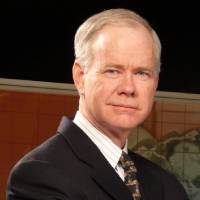
John McElroy is an influential thought leader in the automotive industry. He is a journalist, lecturer, commentator and entrepreneur. He created “Autoline Daily,” the first industry webcast of industry news and analysis.




